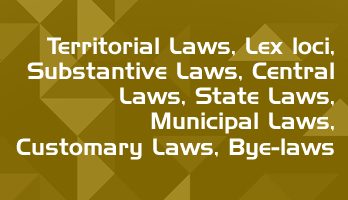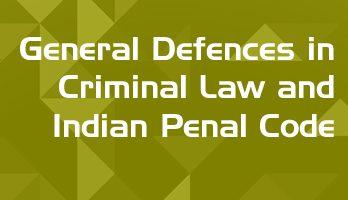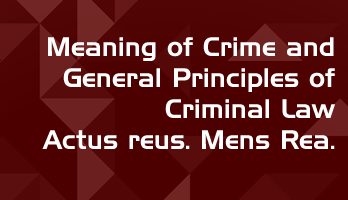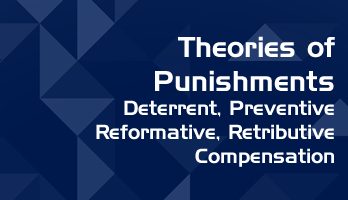Free Full Course Available on LawMint's YouTube Channel
How to Land Your Dream LLB Internship in a Top Law Firm
- Part 1 - Introduction
- Part 2 - Internship Planning
- Part 3 - Internship Research
- Part 4 - Building Your Profile
- Part 5 - The Email
- Part 6 - The Resume
- Part 7 - The Cover Letter
- Part 8 - The Interview
- Part 9 - Self Development
Practical and comprehensive course, with real examples and step-by-step analysis of the complete internship application process. Check out LawMint's YouTube channel now!
Marriage under Hindu Law
Hindus have always considered their marriage to be a sacrament, which has implication that it is permanent, indissoluble, eternal not only for this life but for lives to come and is also regarded as a holy union.
The purpose of Hindu marriage is not just to beget children and get them legitimated but also to perform religious rituals.
Essentials for valid Hindu marriage
The essentials for valid Hindu marriage are as below.
- Neither party has a spouse living at the time of marriage;
- At the time of marriage neither party
(a) is incapable of giving a valid consent due to unsoundness of mind, or
(b) though capable of giving a valid consent has been suffering from mental disorder of such a kind as to be unfit for marriage and procreation of children, or
(c) has been subjected to recurrent attacks of insanity; - the bridegroom has completed the age of twenty-one years and the bride the age of eighteen years at the time of the marriage;
- The parties are not within the degrees of prohibited relationships, unless the custom and/or usage permits such marriage;
- The parties are not “Sapindas” of each other, unless the custom and /or usage governing each of them permits such a marriage.
Child Marriage: It is a form of marriage where either the bride or the bridegroom have not attained the age of 18 years and 21 years respectively.
Sapinda means ‘Particle of same body’. Two persons are said to be Sapindas of each other if one is a lineal ascendant of the other within the limits of Sapinda relationship or if both are Sapindas to the common ancestor.
The Hindu Marriage Act, 1955 provides the extent of Sapinda relationship to five degrees in line of ascent through the father and three degrees in the line of ascent through the mother.
Prohibited Degrees of Relationship: A person may be called in the degree of prohibited relationship
1. If one is a lineal ascendant of the other; or
2. If one was the wife or husband of the lineal ascendant or descendant of the other; or
3. If one was the wife of the brother or the father’s brother’s wife, or
4. If the two are brother and sister, uncle and niece, aunt and nephew or children of a brother and sister or of two brothers or two sisters.
Divorce under Hindu Law
With the advancement and progress in society it was discovered that if it is not possible to live together as husband and wife, then divorce may be an option for peaceful life among the Hindus also. Under the old Hindu law divorce was not recognized except as per the customs.
Grounds for Divorce
Under the Hindu Marriage Act divorce is neither encouraged nor favored, it is permitted only on certain specific grounds which are as below :
Adultery
Sexual intercourse between a married person and someone other than his spouse after solemnization of marriage.
Cruelty
Conduct of such a character as to have caused danger to life, limb or health, bodily or mental pain as to give rise to a reasonable apprehension of such danger.
Desertion
Permanent abandonment of one spouse by the other without any reasonable cause and without the consent of the other or against the wish of such party. Desertion is a total repudiation of all obligations of marriage.
Conversion
if one of the spouses seizes to be Hindu by conversion to another religion, divorce may be obtained.
Insanity
Where one of the spouses has been suffering from incurable unsoundness of mind or suffering from mental disorder of such a kind and to such an extent that the other spouse cannot reasonably be expected to live, divorce may be obtained.
Leprosy
Where one of the spouses has been suffering from virulent and incurable form of leprosy, divorce may be obtained.
Venereal Disease
where one of the spouses has been suffering from venereal disease in a communicable form divorce may be obtained.
Renunciation
where one of the spouses has renounced the world by entering into any religious order, divorce may be obtained.
Presumption of Death
Where a person who is not heard alive by his relations and near ones for a period of seven years or more is deemed to be legally dead. In such a case the other spouse can obtain a decree for dissolution of marriage.
Divorce by mutual consent
The Hindu Marriage Act provides for divorce by mutual consent. It has following essentials:
- a joint petition for divorce by both the spouses is presented to the court,
- the petition should state that they have been living separately for a period of one year and have not been able to live together,
- and that they have mutually agreed to live separately.
Irretrievable Breakdown of Marriage
When either party to a marriage presents a petition for divorce on following grounds
- there has been no resumption of co-habitation for a period of one year or more after passing of a decree for judicial separation,
- that there has been no restitution of conjugal rights for a period of one year or more after the passing of a decree of restitution.
Hindu Marriage Act, 1955
The Hindu marriage Act is an Act of the Parliament of India enacted in 1955. The main purpose of the act was to amend and codify the law relating to marriage among Hindus and others.
The Act includes provisions for separation and divorce. This enactment brought uniformity of law for all sections of Hindus – who previously followed a variety of customs and traditions.
Questions
What are the essentials of a valid Hindu Marriage?
The essentials for valid Hindu marriage are as follows:
1. Neither party has a spouse living at the time of marriage;
2. At the time of marriage neither party-
(a) is incapable of giving a valid consent due to unsoundness of mind, or
(b) though capable of giving a valid consent has been suffering from mental disorder of such a kind as to be unfit for marriage and procreation of children, or
(c) has been subjected to recurrent attacks of insanity;
3. The bridegroom has completed the age of twenty-one years and bride is aged eighteen years;
4. The parties are not within the degrees of prohibited relationships, unless the custom and/or usage permits such marriage;
5. The parties are not Sapindas of each other, unless the custom and / or usage permit such marriage.
What do you understand by Child marriage?
Child Marriage is a form of marriage where either the bride or the bridegroom have not attained the age of 18 years and 21 years respectively.
Free Full Course Available on LawMint's YouTube Channel
How to Land Your Dream LLB Internship in a Top Law Firm
- Part 1 - Introduction
- Part 2 - Internship Planning
- Part 3 - Internship Research
- Part 4 - Building Your Profile
- Part 5 - The Email
- Part 6 - The Resume
- Part 7 - The Cover Letter
- Part 8 - The Interview
- Part 9 - Self Development
Practical and comprehensive course, with real examples and step-by-step analysis of the complete internship application process. Check out LawMint's YouTube channel now!
Acknowledgement : This article is adapted from Swayam – NIOS course material












